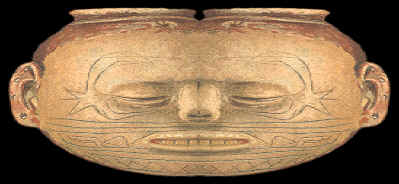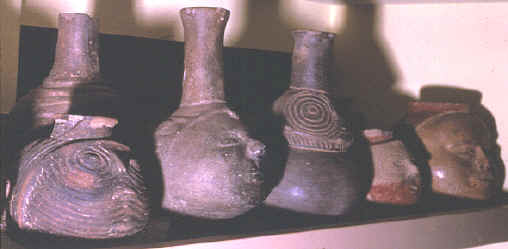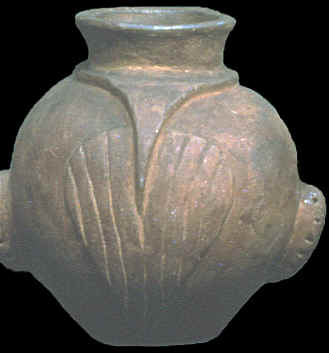|
|
|
Some "head pots' are decorated with engraved lines that represent tattooing. This is an indication that these people did practice tattooing as a form of body decoration. Some people have argued that the markings on the pots may be copies of tattoos that were on the deceased person in the grave they were buried with. |
|
|
|
|
There can be no doubt that some "head pots" were made to represent a visual expression of death. They have closed eyes, a sunken nose and parted lips with teeth showing. The artist may have had the portrait of a particular face in mind before making the clay vessel. This may have been the deceased person or possibly a trophy head from someone killed in battle. |
|
|
|
|
There is evidence of ear and nose piercing by the Mississippian people. Most "head pots" have several perforations on each ear and sometimes the nose is also drilled across the septum. These vessels may have been decorated with various materials, like feathers or other organic items, when they were buried. |
|
|
|
|
"Head pots" are powerful expressive images of death. For well over a hundred years, scholars have been writing about "the remarkable head vases." All agree that they were made by the most skilled artisans within Mississippian society. "Head pots" convey images of death but they also preserve important information from this Stone Age society. They show hair designs, tattoo styles, ear and nose piercing and anatomically accurate facial features. "Head pots" give us a rare opportunity to see images of a people who lived long ago. |
|
|
"REFERENCES"
1903,
Holmes, W. H., "Aboriginal Pottery of the Eastern United
States," "20th Annual Report, Bureau of American
Ethnology," pp. 96-98. |
|



